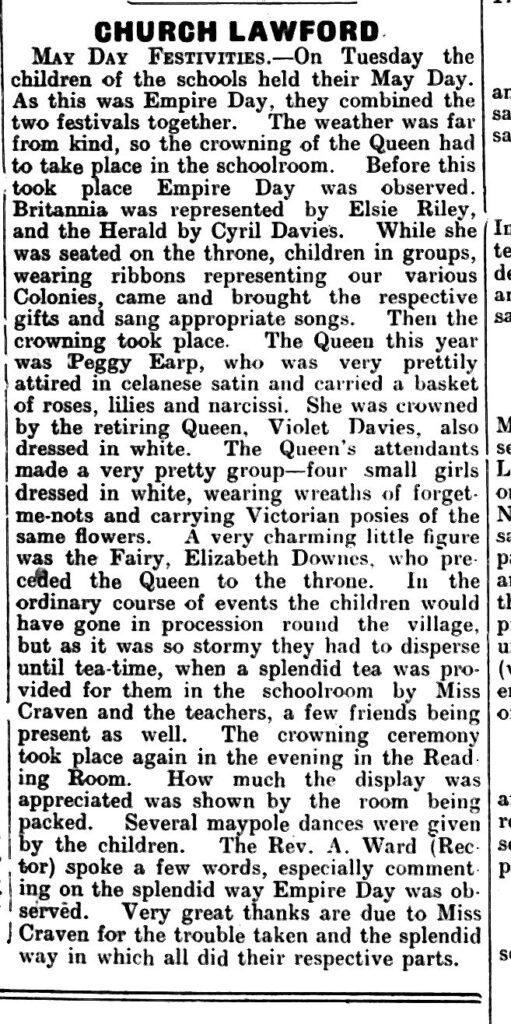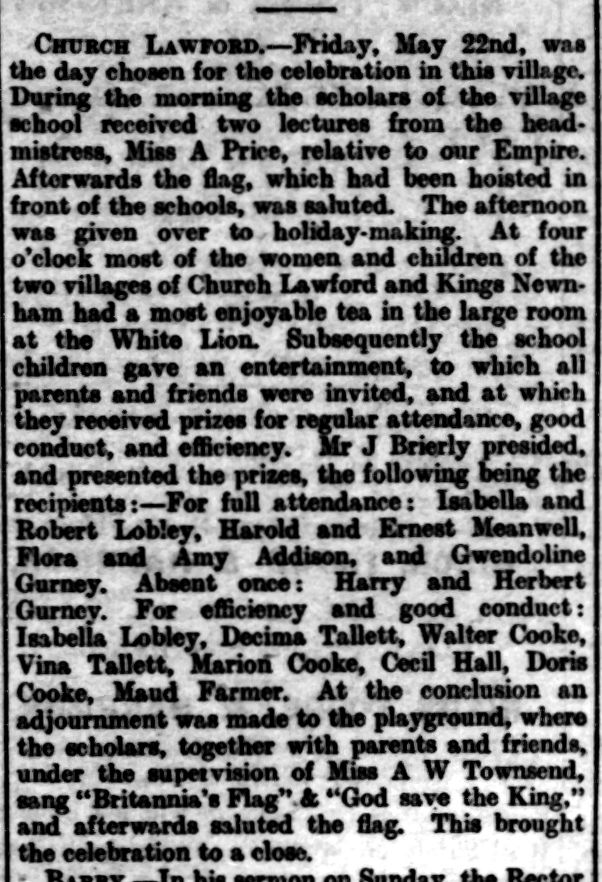The Traditional May Day Festival was celebrated in the two villages for many years. The May Day Festival and Parade is discussed here, and the May Queen celebrations are discussed here. A list of the Village May Queens has also been compiled. The village school also closed for the May Day festival up until the Second World War.
From early in the twentieth century the villages also took part in the Empire Day Celebrations, planned for 24th May. This was also a Spring Festival, and in some years it was celebrated on the same day as the May Day Festival, but on other days it was a separate rather more solemn celebration which allowed the school children to have a half-day holiday in the afternoon, following a morning of lessons where they were taught about the Empire.
The May period was also the time for other events without an exact annual date, which could be marked by school closure, such as Ascension Day (39 days after Easter Sunday) and the Whitsuntide Holiday (the week after Whit Sunday (Pentecost) – the seventh Sunday after Easter).
For example in 1932 the May Day and Empire Day celebrations were held at the same time, as discussed in the Rugby Advertiser of 27th May 1932.

Empire Day was first celebrated in 1902, the year after the death of Queen Victoria, with the ceremonies held on 24th May – the late Queen’s birthday. It did not become an official annual event until 1916, but the two villages did recognise it before that, as shown in the following article from the Rugby Advertiser of 30th May 1908.

After around 50 years the celebration was renamed as British Commonwealth Day in 1958 and then to Commonwealth Day in 1966, when the date also changed to the Monarch’s Official birthday – 10th June for Queen Elizabeth II.
